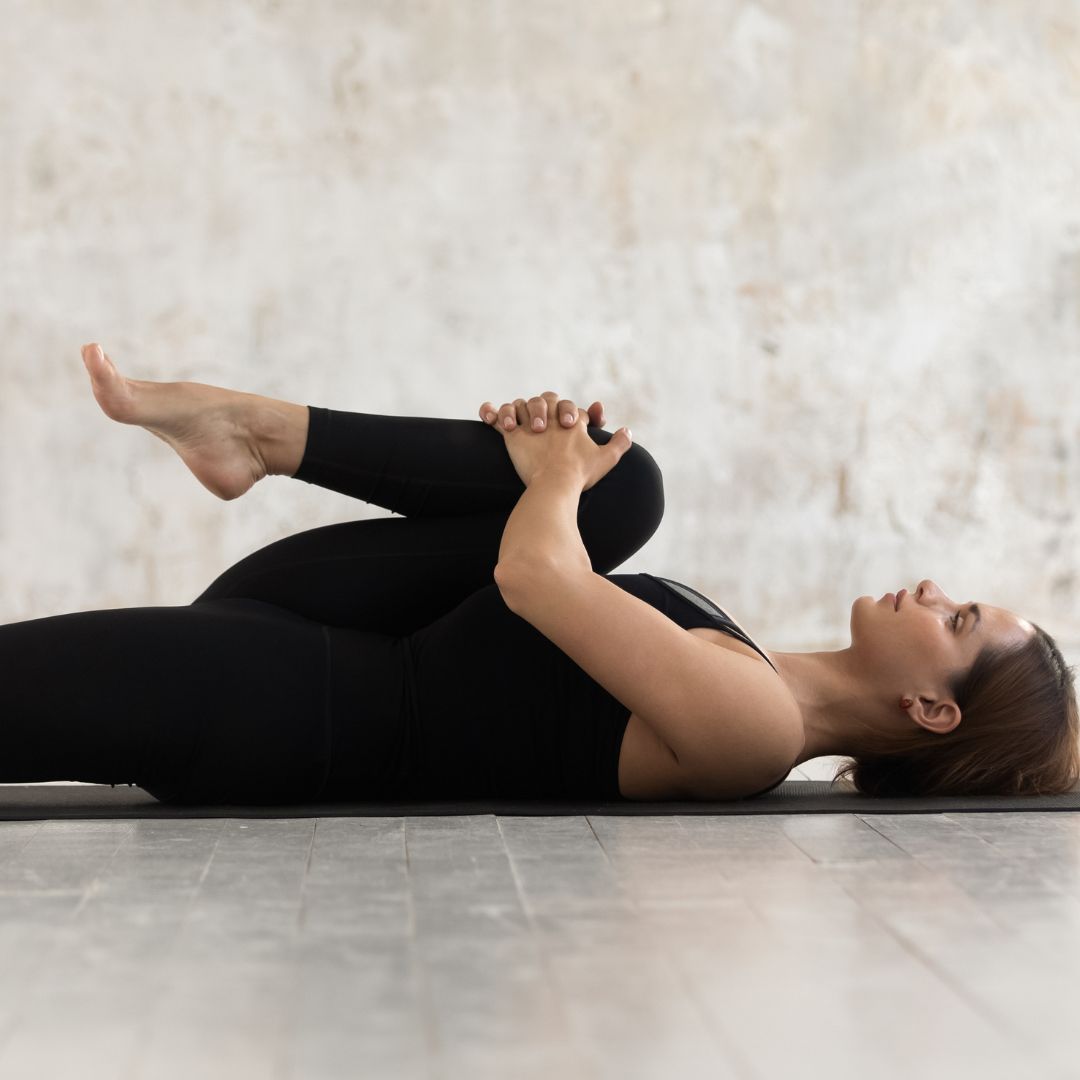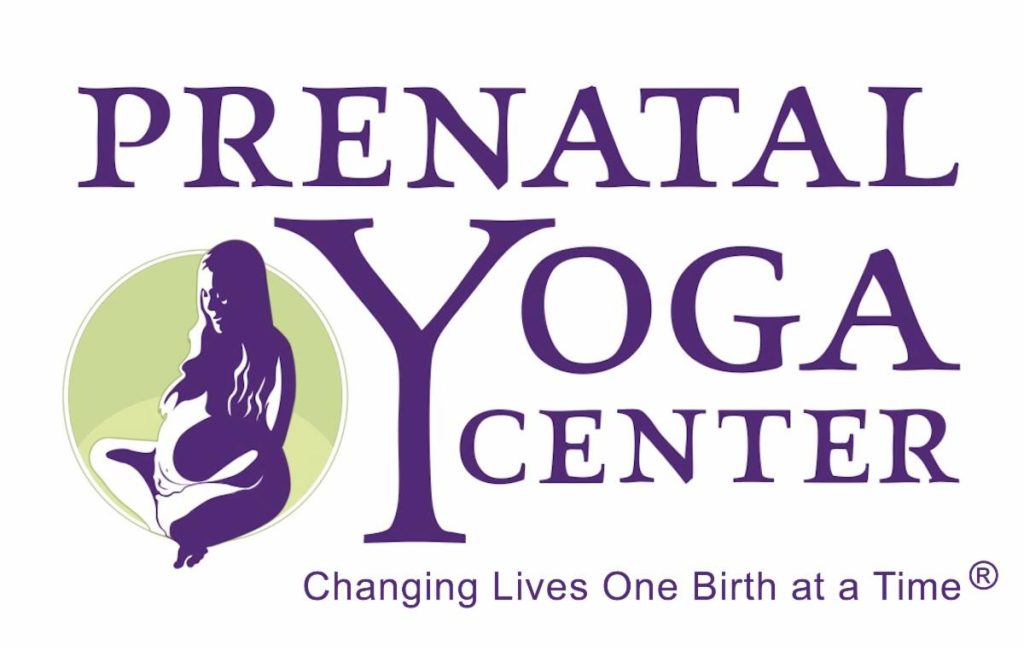Being a self-proclaimed anatomy geek, it may not be surprising that I have favorite muscles and the psoas muscle is one of them! It’s a sensitive muscle that will step in and pick up the slack when its neighboring muscles may not be pulling their weight, it’s a major stabilizer for your torso and plays a huge role in an efficient, functional birth. What’s not to love about it?
So let’s take a deep dive into better understanding this muscle.
Navigation
- What is the Psoas muscle?
- How does it affect birth?
- How does psoas affect postpartum healing?
- What yoga poses help release the psoas?
- How does the psoas affect the nervous system?
- Don’t forget the chiropractor!
- FAQS
What is the Psoas muscle?
The psoas (pronounced SO- AS) is the longest muscle in the body, running from T12 (thoracic vertebrae 12), down the spine, behind your uterus, into your pelvis and then attaches to the femur (thigh bone). You have two of them, one on each side of your spine. It connects your upper body to your lower body! The psoas stabilizes your spine and allows you to bend your hips and legs towards your chest
How does it affect birth?
The psoas plays a pretty big role in birth. Remember, the psoas muscle runs behind the uterus and acts like a runway for babies to follow as they descend into your pelvis. A tight psoas can hold a baby up from an easy descent into the birth canal. If one side of the psoas is unequally tight, it can also affect your baby’s head position (which may result in the head tipping more to one side than the other). All of this can slow labor down.
This is why I always include psoas releasing poses into class, especially when I have folks 36 plus weeks attending!
How does psoas affect postpartum healing?
When one muscle or groups of muscles are not working as intended, another muscle will step in to compensate. We see this a lot in postpartum and it can inhibit postpartum healing.
The Abdominal Muscles
During pregnancy, your abdominal muscles lengthen to create space for your growing baby. However, this leaves your abs stretched out and weak. Without core strength and stability, the psoas will compensate and do the work of the abs becoming the primary vertical stabilizer for your spine.
Posture and alignment
When I say “posture” I don’t want you to interpret that as walking around with a book balanced on your head and being stiff. There is no “perfect posture”. Another way to think of posture is a well aligned body.
I usually refer to a well aligned body, as “back it up and stack it up”. This would be balancing on all four corners of your feet, moving your thigh bones back in the hip socket and stacking your pelvis and ribs and bringing your head over your spine as opposed to a “chicken neck” with your head thrust forward.
Between holding your baby, lack of core strength, lack of hip strength and a tight psoas, most postpartum folks don’t live in this alignment.
When it comes to posture and the psoas, we often see a tight psoas pulling the back body forward which will flare the bottom ribs. This will put intraabdominal pressure on the linea alba, the fascia connecting the two rectus abdominal muscles, and inhibit diastasis recti from healing.
Rib flare will also affect the pelvic floor. If the rib cage is tipping more forward, the diaphragm and pelvic floor are not working in harmony and this can lead to pelvic floor tightness. However, when the diaphragm is in the optimal angle, stacked evenly over the pelvis, it relieves stress off the psoas. So breathing like 360 breathing which can help create back body expansion will help slacken and release the psoas and minimize rib flare.
Hip and glute muscles
Pregnancy can leave the butt and hip muscles tight and weak which often corresponds with a psoas tightness. One way to help the psoas release and not be overworked is to strengthen these other muscles. Weak glutes and hips can also contribute to a tight pelvic floor! So focusing on butt and hip strengthening can help the postpartum body heal.
What yoga poses help release the psoas muscle?
Most people live with a tight psoas. Remember- a tight muscle often becomes a weak muscle! Fortunately, we have many yoga poses and breath work that can help release the tension and build strength in the support muscles. Ideally, we are looking for core balance, and an effective and well-functioning pelvic floor and diaphragm!
Here are some of my favorite poses for the psoas.
360 Breathing
Where to start with my praise of 360 breathing! Focusing on diaphragmatic breathing helps evenly lengthen your pelvic floor muscles, mobilizes your side and back ribs, quiets your nervous system and relaxes your psoas.
Bring your hands around your back & side ribs, or grab a strap to wrap around your lower ribs. Focus your breath into your back & side ribs, and see if you can feel the expansion on the inhale & the deflation of your ribs on the exhale. The best part of 360 breathing is that it has so many benefits besides relaxing the psoas! It is a go-to exercise in EVERY prenatal & postnatal yoga class.
The Dangle
This pose offers a more passive release of the psoas. Here’s how to do it: Stand on a block or stable stack of books. Try to keep your hips even & your torso from moving as you allow one leg to dangle & gently swing forward & backward.
Passive Psoas Muscle Release
If you’re comfortable on your back, bend your knees, lift your hips, and slide a block under your sacrum. Then extend one leg and breath into the front of your hip. I love this pose since it passively releases the psoas, rather than using forceful activation to lengthen the muscle.
90/90
This exercise offers so much! It helps with hip mobility, releases the psoas muscle, helps reduce round ligament pain and provides internal rotation which many yoga poses do not do!
Here’s how I teach it!
✨Start by windshield wipering your leg
✨Drop your knees to the right
✨Bring your left leg back so you legs make two 90 degree angles
✨Bring your left hand to your left hip and gently move your left hip back and forth
✨To add some glute strengthening, lift and lower your left heel
✨Repeat on the other side!
Dynamic Anjesana
It’s very easy to collapse into one’s flexibility and hang in your joints in anjaneyasana. Instead, work to create a stable base and then rock a bit in and out of the pose. This dynamic rocking can bring more blood flow to the psoas and warm it up more than a static fold.
Stabilize the pelvis by lifting the pubis up and the tailbone down (without tucking under)! Compact the outer hips inward, and magnetize the inner thighs together. By stabilizing in this way, we can lengthen the spine and keep our joints safe.
Internal rotation poses
The psoas contracts when doing externally rotated poses. So including internally rotated poses will relax your psoas. Some of my favorites are virasana, hero’s pose and a pose I call, “Deb’s pyramid”
Deb’s pyramid:
✨Place your feet in a wide stance and internally rotate your legs.
✨Soften your knees a touch and actively extend your arms and spine forward as you pull your hips back.
✨Enjoy several breaths here!
✨Parallel your legs.
✨Bend your right knee and sit into your right hip.
✨Walk your blocks and arms to the left as you pull your right hip back.
✨Repeat on the other side.
How does the psoas affect the nervous system?
Both the diaphragm and the psoas connect at T12 (thoracic vertebra 12) and influence one another.
When stressed, anxious, sad or fearful, the diaphragm does not function as well therefore your respiration (breathing) is affected. This can move the body into the sympathetic “fight or flight” nervous system. In response, the psoas tightens as it prepares to “jump into action.”.
By shifting your focus and trying to regulate your breathing, you can help move your body from the sympathetic nervous system to the parasympathetic “rest and relax” state.
You can also include some of the more passive psoas releasing yoga poses into your practice with mindful 360 breathing to help quiet your nervous system.
Don’t forget the chiropractor!
I would be remiss not to mention the work of a chiropractor who’s knowledgeable about the Webster Technique. This can also bring balance to the psoas.
Now that you have a better understanding of psoas, has it become one of your favorite muscles, too?
To attend an Online or In-Person class here at the Prenatal Yoga Center, click the button below to view our class schedule!
FAQS
What Happens to the Psoas During Pregnancy?
During pregnancy, the psoas muscle plays a crucial role in stabilizing the spine and pelvis. As the body undergoes physical changes to accommodate the growing baby, the psoas can become tight or overstretched. This tightness can affect the baby’s descent into the pelvis and potentially impact labor. Additionally, the psoas may compensate for weakened abdominal muscles, which are stretched during pregnancy, leading to potential postural changes.
How Can I Relax My Psoas During Pregnancy?
To relax the psoas during pregnancy, gentle yoga poses and breathwork can be highly effective. Practices such as 360 breathing, which focuses on diaphragmatic breathing, can help relax and lengthen the psoas. Additionally, poses like the Passive Psoas Release, where you lie on your back with a block under your sacrum and extend one leg, can gently release tension in the psoas. It’s important to engage in these exercises mindfully and preferably under the guidance of a certified prenatal yoga instructor.
How Does the Psoas Affect the Pelvic Floor?
The psoas muscle significantly impacts the pelvic floor. A tight psoas can pull the lower back forward, leading to a rib flare. This change in posture puts extra pressure on the linea alba and can inhibit the healing of diastasis recti. Furthermore, a misaligned rib cage affects the diaphragm and pelvic floor’s harmonious functioning, potentially leading to pelvic floor tightness. Therefore, maintaining a balanced and relaxed psoas is crucial for a healthy pelvic floor.
Is a Psoas Release Safe During Pregnancy?
Psoas release, when done gently and correctly, can be safe during pregnancy. It’s important to choose passive and gentle techniques, especially as the pregnancy progresses. Poses like the Passive Psoas Release or gentle yoga movements that focus on relaxation and alignment can be beneficial. Engaging in these movements mindfully with the guidance of a certified prenatal yoga instructor is preferable to ensure optimal safety.







